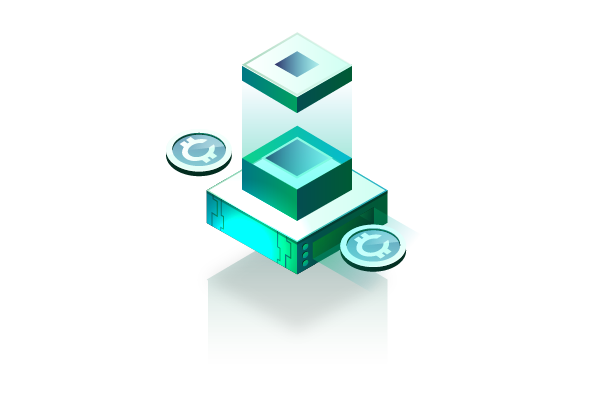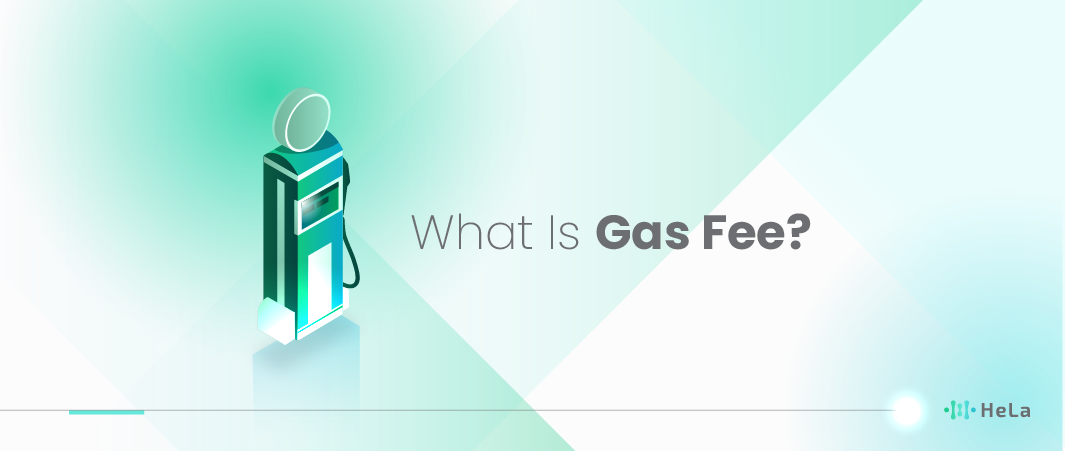In the rapidly evolving world of blockchain and cryptocurrencies, one term that often crops up is “gas fees.” But what exactly does it mean? At its core, gas fees are the transaction costs that users pay to miners or validators to process and secure their transactions on a blockchain network. This concept, fundamental to the functioning of blockchain platforms, ensures that transactions are processed efficiently and securely.
Gas fees are not just a technical necessity; they’re a critical component of the blockchain’s economic model. They deter spam transactions and allocate resources on the network by requiring a fee for the computational efforts. Understanding gas fees is essential for anyone looking to navigate the world of digital currencies and blockchain technology, as it directly impacts the cost of transactions and the overall user experience.
As blockchain technology continues to grow in popularity and usage, the discussion around gas fees has become more pertinent. From Ethereum to newer platforms, each blockchain has its own mechanism for calculating and charging these fees. In this guide, we’ll delve into the basics of gas fees, how they’re calculated, and their significance in ensuring the smooth operation of blockchain networks. With a focus on simplicity and clarity, we aim to demystify the concept of gas fees for everyone.
What is Gas Fee?

In blockchain technology, gas fees serve as the transaction fees that users pay to miners or validators to compensate them for the computational resources needed to process and validate transactions on the blockchain network. These fees are an integral component of many blockchain ecosystems, ensuring that the network remains secure and transactions are processed efficiently. The concept of gas fees is particularly prominent in networks like Ethereum, where they play a critical role in managing the network’s economy and resource allocation.
Gas fees are denominated in the native cryptocurrency of the blockchain. For example, on the Ethereum network, gas fees are paid in Ether (ETH). The amount of gas required for a transaction depends on its complexity; simple transactions, such as transferring cryptocurrency from one wallet to another, typically consume less gas compared to more complex operations like executing smart contracts, which are self-executing contracts with the terms of the agreement directly written into code.
Also Read: What Is a Bond? Guide to Its Financial Meaning
The cost of gas fluctuates based on supply and demand dynamics within the network. During periods of high demand, when many users are trying to conduct transactions, the cost of gas can increase significantly. This is because there is more competition among users to get their transactions included in the next block. Conversely, when network activity is lower, gas fees tend to decrease. Users can often choose to pay higher gas fees for faster transaction processing or opt for lower fees if they are willing to wait longer for their transaction to be processed.
Gas fees not only compensate miners or validators for their efforts but also act as a mechanism to prevent spam transactions and ensure the network is not overwhelmed by frivolous or malicious activity. By requiring a fee for every transaction, blockchain networks can deter bad actors from flooding the network with transactions intended to disrupt service.
How Are Gas Fees Calculated?
In the context of blockchain and cryptocurrency transactions, particularly on networks like Ethereum, gas fees are an essential concept that users must understand. These fees are paid by users to compensate for the computing energy required to process and validate transactions on the blockchain network.
The calculation of gas fees hinges on two primary components: the gas limit and the gas price. Here’s a deeper dive into what each term means:
- Gas Limit: This is the maximum amount of gas units that a user is willing to spend on a transaction. The gas unit is a measure of the computational work required to execute a transaction or a smart contract operation on the blockchain. Setting an appropriate gas limit is crucial because it ensures that the transaction will be processed. If the gas limit is too low, the transaction could fail because it runs out of gas before completion. However, any unused gas from the limit set is refunded to the user.
- Gas Price: This refers to the amount of cryptocurrency (such as Ether in the case of Ethereum) that the user is willing to pay per unit of gas. The gas price is usually measured in Gwei, where 1 Gwei equals one-billionth of an Ether. Higher gas prices can incentivize miners or validators to prioritize a transaction, leading to faster processing times, especially when the network is congested.
The total gas fee that a user pays for a transaction is calculated by multiplying the gas limit by the gas price: Total Gas Fee = Gas Limit × Gas Price. This total fee compensates miners or validators for the computational power expended to execute the transaction and include it in a block.
To address the volatility and unpredictability of gas fees, especially on networks like Ethereum, improvements such as EIP-1559 have been introduced. EIP-1559 (Ethereum Improvement Proposal 1559) significantly changes how gas fees are estimated and adds a mechanism to burn a portion of the fees, aiming to make the fee market more predictable and fair. This proposal includes the concept of a “base fee” for transactions, which adjusts dynamically based on network congestion, alongside an optional “tip” to miners for transaction prioritization, thereby aiming to streamline the user experience by making transaction costs more predictable.
Understanding these components and mechanisms is vital for anyone engaging with blockchain networks to effectively manage transaction costs and navigate the ecosystem efficiently.
The Impact of Gas Fees on Blockchain Transactions

The concept of gas fees is central to the operation of many blockchain networks, especially those that support smart contracts and decentralized applications, like Ethereum. These fees are not arbitrary charges but serve as a compensation for the computational energy required to process transactions and execute smart contracts on the network. The amount of gas needed for a transaction depends on its complexity; simple transfers require less gas, while complex interactions with smart contracts need more.
The impact of gas fees on blockchain transactions extends beyond just the speed of processing. They introduce a market mechanism where users can bid higher gas fees to have their transactions processed ahead of others. This becomes particularly noticeable during times of high network congestion when many users are trying to make transactions simultaneously. High demand for transaction processing can drive gas fees up significantly, making it costly to perform operations on the blockchain.
For regular users and developers, understanding and managing gas fees is a crucial part of engaging with blockchain networks. It affects decisions about when to transact and how to set gas fees to balance cost and the urgency of transactions. Moreover, it impacts the development of decentralized applications, as developers must optimize their smart contracts for gas efficiency to ensure that their applications remain accessible and economical for users.
However, this mechanism also raises concerns about the accessibility and equity of blockchain networks. Users with less to spend on gas fees may find themselves consistently outbid in periods of congestion, leading to their transactions being delayed or, in extreme cases, never processed. This situation can hinder the adoption and utility of blockchain technology, especially for applications envisioned to run on a principle of inclusivity and decentralization.
In response, several blockchain projects are exploring solutions to mitigate the impact of gas fees. These include layer-2 scaling solutions that process transactions off the main blockchain to reduce congestion and fees, improvements in blockchain efficiency, and the development of new consensus mechanisms that can reduce or eliminate gas fees. Understanding the nuances of gas fees and their impact is essential for navigating the blockchain space, whether as a user, developer, or investor, highlighting the ongoing evolution of blockchain technology to address its inherent challenges.
Strategies for Minimizing Gas Fees

Strategies for minimizing gas fees on blockchain transactions are essential for users looking to reduce their expenses. These fees are necessary for transactions to be processed and validated on a blockchain network, acting as compensation for the computational energy required. However, they can vary widely depending on network congestion, the complexity of the transaction, and the blockchain itself. Here’s a deeper dive into the strategies mentioned:
Timing Transactions During Off-Peak Hours
Gas fees tend to be lower during times when the network is less congested. This is because the demand for transaction processing decreases, leading to lower required fees to incentivize miners or validators. Users can monitor network activity and plan their transactions during these off-peak hours to save on fees.
Utilizing Blockchain Networks with Lower Fees
Different blockchain networks have different fee structures. For example, Ethereum is known for its high gas fees during peak times, partly due to its widespread use and the complex transactions it supports. Alternatives like Binance Smart Chain, Solana, and Polygon might offer lower fees, making them attractive for users looking to minimize costs. It’s important to consider the security, decentralization, and functionality of alternative networks when making a choice
Optimizing the Gas Limit and Gas Price
The gas limit is the maximum amount of gas a user is willing to spend on a transaction, while the gas price is the amount of the blockchain’s native currency the user is willing to pay per unit of gas. By adjusting these parameters, users can ensure they are not overpaying for their transactions. However, setting the gas limit too low may result in a failed transaction, so careful optimization is necessary.
Features that Help Estimate and Optimize Gas Fees
Many wallets and platforms now include features to help users estimate the gas fees they will need to pay for a transaction. Some even offer the ability to replace a transaction with a higher gas price if the original transaction is taking too long to process, known as “gas bumping.” Additionally, there are tools and services designed to optimize gas costs by batching transactions or choosing optimal transaction times.
While gas fees are an unavoidable aspect of using blockchain technology, understanding how they work and employing strategies to minimize them can significantly reduce the costs associated with blockchain transactions. This not only makes transactions more economical but also enhances the overall user experience by making blockchain technology more accessible and practical for a wider range of applications.
The Future of Gas Fees

The future of gas fees, a critical component in the functionality and user experience of blockchain networks, is a subject of much debate and innovation in the cryptocurrency and blockchain industry. Gas fees are transaction fees that users pay to miners or validators to have their transactions processed and secured on a blockchain network. These fees can fluctuate significantly, depending on network congestion and the complexity of the transaction. High gas fees can be a barrier to entry for users and hinder the scalability of a blockchain.
As the conversation around gas fees evolves, developers and researchers are actively seeking methods to reduce these costs and enhance network efficiency. One of the most promising developments in this area is the adoption of Layer 2 scaling solutions. Layer 2 solutions are protocols that operate on top of the base blockchain layer (Layer 1) and are designed to process transactions more efficiently and at a lower cost. By handling transactions off the main blockchain, these solutions can significantly reduce gas fees and improve transaction throughput, without compromising on security.
Examples of Layer 2 solutions include state channels, sidechains, and rollups. Rollups, in particular, have gained considerable attention for their ability to batch multiple transactions into a single transaction on the main chain, dramatically reducing the per-transaction cost.
Also Read: Metaverse Technology: The Potential of Virtual Worlds
In addition to technological innovations like Layer 2 solutions, the future of gas fees may also involve new economic models. These models could offer more predictable and stable fee structures, potentially integrating mechanisms like fee markets, dynamic pricing based on network congestion, and subsidies for certain types of transactions or users. Such economic models aim to balance the need for network sustainability—ensuring that validators or miners are compensated for their work—with the desire for a user-friendly experience that encourages adoption and growth.
Overall, the future of gas fees in blockchain networks is likely to be characterized by a combination of advanced scaling technologies and innovative economic strategies. These efforts aim not only to reduce costs for users but also to enhance the overall efficiency, scalability, and sustainability of blockchain networks, making them more accessible and practical for a wide range of applications and users.
Conclusion
Gas fees are a fundamental aspect of the blockchain ecosystem, enabling the secure and efficient processing of transactions. While they can add an extra layer of complexity to blockchain transactions, understanding how gas fees work is crucial for anyone engaging with this technology. By employing strategies to minimize these costs and staying informed on the latest developments, users can navigate the blockchain space more effectively.
As blockchain technology continues to evolve, the discussion around gas fees and their optimization remains a key focus for developers and users alike. The ongoing efforts to improve the efficiency of blockchain networks promise to make digital transactions more accessible and affordable for everyone. In embracing these advancements, the future of blockchain looks bright, with gas fees playing a critical role in shaping its sustainable and user-friendly landscape.
Disclaimer: The information provided by HeLa Labs in this article is intended for general informational purposes and does not reflect the company’s opinion. It is not intended as investment advice or recommendations. Readers are strongly advised to conduct their own thorough research and consult with a qualified financial advisor before making any financial decisions.

Joshua Soriano
I am a writer specializing in decentralized systems, digital assets, and Web3 innovation. I develop research-driven explainers, case studies, and thought leadership that connect blockchain infrastructure, smart contract design, and tokenization models to real-world outcomes.
My work focuses on translating complex technical concepts into clear, actionable narratives for builders, businesses, and investors, highlighting transparency, security, and operational efficiency. Each piece blends primary-source research, protocol documentation, and practitioner insights to surface what matters for adoption and risk reduction, helping teams make informed decisions with precise, accessible content.
- Joshua Soriano#molongui-disabled-link
- Joshua Soriano#molongui-disabled-link
- Joshua Soriano#molongui-disabled-link
- Joshua Soriano#molongui-disabled-link

